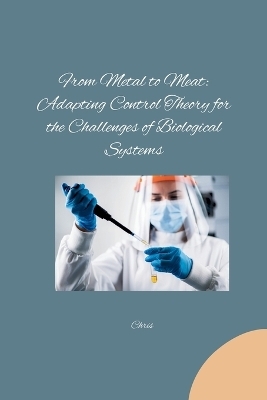From Metal to Meat: Adapting Control Theory for the Challenges of Biological Systems
tredition (Verlag)
978-3-384-25844-1 (ISBN)
In "Innate Defense: Cells & Function," Professor Chris delves into the intricate mechanisms of our body's innate immune system, illuminating the pivotal role of various cellular defenders in safeguarding against pathogens and maintaining homeostasis. This comprehensive work merges cutting-edge research with accessible insights, offering a compelling exploration of innate immunity. Professor Chris, a distinguished immunologist renowned for his expertise in cellular immunology, brings decades of research and teaching experience to this groundbreaking book. With a passion for unraveling the complexities of immune responses, Chris elucidates the fundamental principles governing innate defense mechanisms, from the identification of pathogens by pattern recognition receptors to the orchestrated responses of phagocytes, natural killer cells, and other sentinel cells. The book offers a detailed examination of the diverse functions of innate immune cells, highlighting their roles in tissue surveillance, inflammation, and the initiation of adaptive immune responses. Through clear explanations and illustrative examples, Chris elucidates how these cellular processes contribute to overall immune defense and disease prevention. "Innate Defense: Cells & Function" serves as a vital resource for students, researchers, and healthcare professionals seeking a deeper understanding of innate immunity. It seamlessly integrates foundational concepts with recent advancements, making complex immunological topics accessible to readers at all levels of expertise. Professor Chris's narrative style engages readers, fostering curiosity and appreciation for the intricate biology of innate defense. This book is not merely a compilation of facts; it is an invitation to explore the fascinating world of cellular immunology, empowering readers with knowledge essential for tackling infectious diseases and advancing biomedical research.
| Erscheint lt. Verlag | 12.6.2024 |
|---|---|
| Verlagsort | hg |
| Sprache | englisch |
| Maße | 155 x 234 mm |
| Gewicht | 230 g |
| Themenwelt | Technik ► Elektrotechnik / Energietechnik |
| Schlagworte | Biological control systems • Biomechanics • Biomimetic control design • Computational modeling • Control theory adaptation • Motor Control • Movement control • Neuromechanics • Nonlinear Control Theory • Physiological feedback mechanisms |
| ISBN-10 | 3-384-25844-4 / 3384258444 |
| ISBN-13 | 978-3-384-25844-1 / 9783384258441 |
| Zustand | Neuware |
| Haben Sie eine Frage zum Produkt? |
aus dem Bereich




